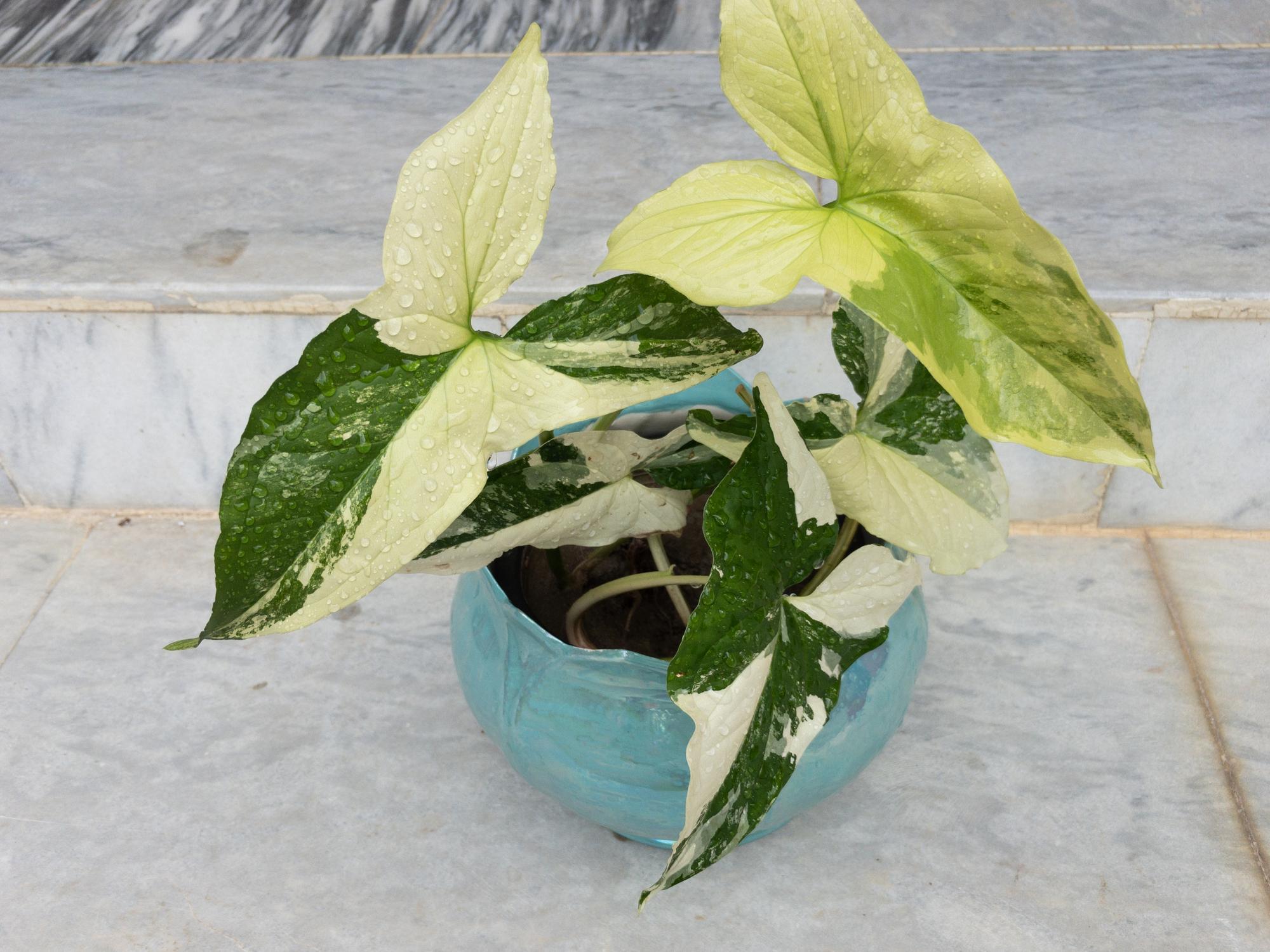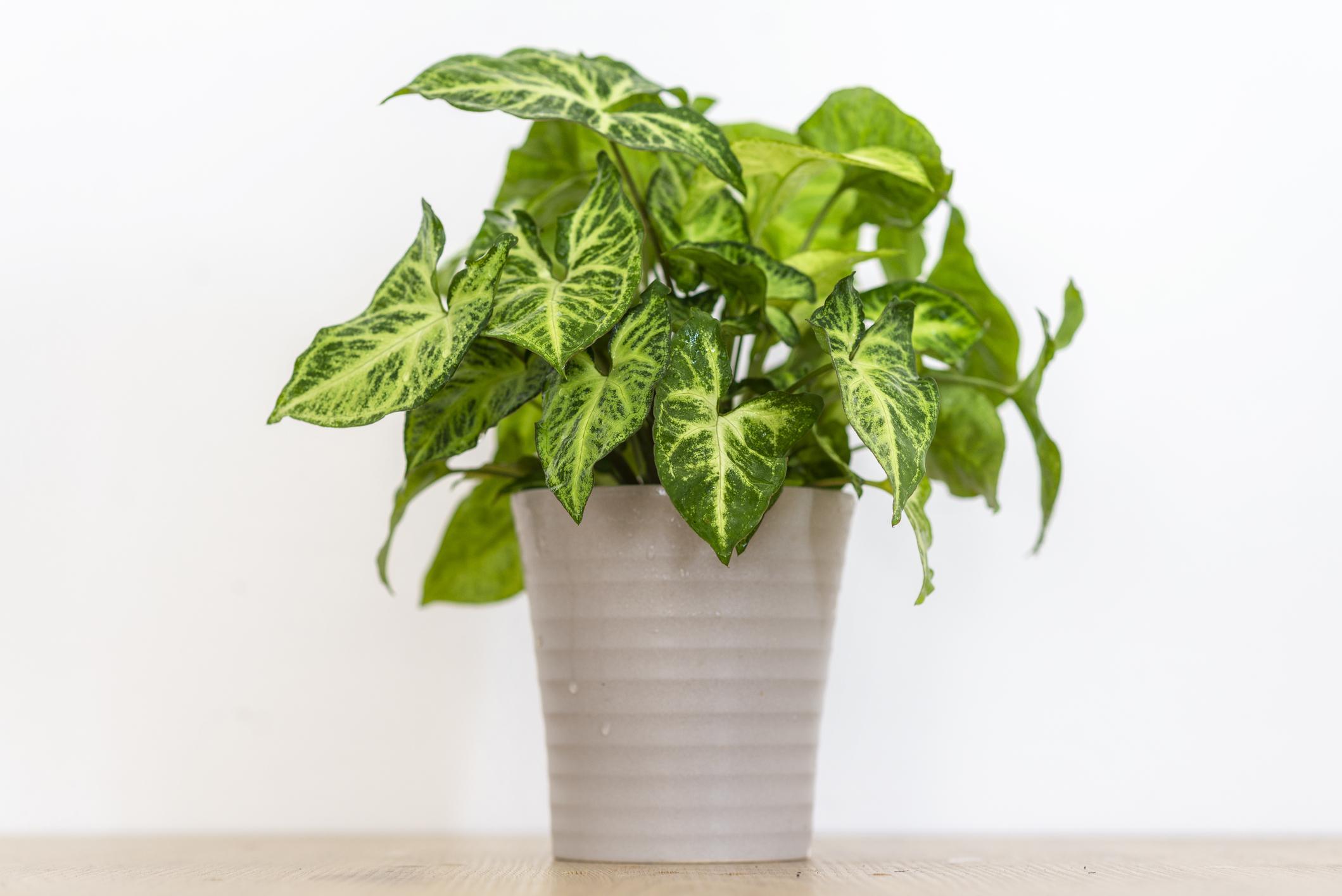Syngonium Plant Care and Propagation


Syngonium care requires warm temperatures, filtered light, soil with good drainage, fertilizer during growth, moderate watering and pruning if it grows too tall. Syngonium plants are those which correspond to carious speciesfrom the genus Syngonium. is a very popular ornamental plant for its large, heart-shaped leaves. It is comonly kept as a houseplant that has the additional benefit of purifying the aire by eliminating xylene.
Learn everything you need to know about syngonium plant care and propagation with thedailyECO. We explain its needs in terms of light, water, soil and more, as well as how to propagate syngonium plants to form new ones in our complete guide.
Characteristics of the syngonium
Before we look at our complete guide on how to care for the syngonium plant, we look at its main characteristics:
- The leaves of the syngonium are observably veined, with two lobes behind and an elongated tip giving it the appearance of a lance or elongated heart.
- The leaves can be green, although many also have white variegation details. Due to the popularity of this plant, there are many cultivars and varieties in addition to more than 30 species that already exist naturally.
- They are climbing plants that can measure 5-8 ft/1.5.2.5 m high. They have particularly elongated stems. If you like this type of plant, you can take a look at our related article on how to care for potted ivy.
- They are perennials that maintain their leaves throughout the year.
- Flowers are infrequent when grown outside their native location, but when they do occur they are red, green, white or orange.
Types of syngonium plants
As we have indicated, there are many varieties of natural and created syngonium. Many of the most popular are cultivars of the most common syngonium plant known commonly as the arrowhead plant (Syngonium podophyllum), although it has various common names. Among the types of Syngonium podophyllum we can find are:
- Syngonium podophyllum 'Pink Allusion': has has pastel pink leaves
- Syngonium podophyllum 'White Butterfly': which when juvenile has cream leaves edged with a green margin.
If you want to enjoy this beautiful plant in your home, you can use the link below:

Syngonium plant light, temperature and location
This plant is of subtropical origin and grows in thick jungles. For this reason, its light requirement must be partial to emulate the light it receives through the abundant vegetation of its natural habitat. This indirect light can be through glass, making it a great indoor plant. You have to be careful not to expose it directly to the sun because its leaves would burn.
They always need a temperature above 15 ºC/59 ºF. It is not recommended in areas where there are very cold winters. If you have heating, you have to keep it away from the heat source because it will dry out.
Since it is a type of climbing plant, it is advisable to place a stake on which it can grow. It can also lean against a wall for support as it grows. Leaving it hanging is also an option to bring life to interior spaces.
Learn more about semi-shade houseplants with our article on different types of plants for partial shade.
Syngonium soil and fertilizer
The best soil for syngonium plants must be well filtered to avoid root rot. To help the water retain and have a good quality of nutrients, prepare an enriched universal soil mixture by taking equal parts of peat and worm castings, adding a handful of vermiculite or tepojal for better drainage. Learn how to make worm castings at home to learn more.
While it is growing, which is during the first 5 years of the plant's life, it is advisable to add fertilizer. This should be in liquid form and applied every month.

Syngonium plant watering
We continue our complete syngonium care guide by looking at watering. This plant is not very demanding irrigation. The recommended watering frequency is every time the substrate is dry. We will need to space it out more in winter. It is necessary to spray water on the leaves with the help of a spray bottle during the summer to provide greater environmental humidity that is normally needed in this season.

Pruning and maintenance of syngonium plants
The syngonium can grow very tall. If it becomes too uncontrollable or our space does not allow such a size, it can be pruned by the stems, but always during the summer and after flowering (if it occurs). If there are dead stems or leaves, they should be removed to avoid taking away energy from the plant. Pruning the rising stems when they are a juvenile tends to give the leaves a more arrow than heart shape, hence the name arrowhead plant.
The stems usually take their own direction and form spaces within the plant. If this is the case, they can be bound together to compact them and make them look better.
Occasionally, you have to clean the leaves with the help of a damp cloth. Being smooth and having a large surface area means they accumulate a lot of dust. This will not only leave them clean, but will also allow them to photosynthesize better. If you want to move to another pot, you have to do it in spring.

Syngonium plant health care
The sap of this plant is toxic because it contains oxalate crystals. This means it is dangerous if ingested, so it should be avoided in homes where there are curious pets and children who can pick it up and chew it. If you do want to keep this in a home with pets or young children, it will need to be placed somewhere safe and out of their reach.
Symptoms of syngonium poisoning include excessive salivation and vomiting. It is also irritating if it comes into contact with the mucous membranes and sometimes even with the skin. It is recommended to use gloves when handling it, such when pruning it and transplanting it. This is especially the case if you are very sensitive to plant sap or have sensitive skin in general.
Learn more about plant toxicity with our article on types of edible and toxic chestnuts.

Syngonium propagation
The syngonium develops aerial roots, so we can reproduce it by cuttings. This is the process:
- We will make a cut in the original plant between two of its nodes, which are small balls that protrude from the stem.
- This cutting will be placed in water so that it begins to develop roots.
- Once the roots appear, the cutting can be transferred to the ground .
Ideally this will be carried out in summer to be successful. If possible, add a heat source beneath the glass in which it is placed. A good idea is to put it on top of the refrigerator that normally releases heat, as long as it also receives light there.
If you want to read similar articles to Syngonium Plant Care and Propagation, we recommend you visit our Plant care and cultivation category.
- Royal Horticultural Society. (n.d.). Syngonium. Retrieved from: https://www.rhs.org.uk/plants/182570/syngonium-pink-allusion/details
- De Cruz, R. (2014). Ornamental and horticultural gardening. Spain: Ministry of Education, Culture and Sports.
- Knight, A. (2007). A Guide to Poisonous House and Garden Plants. Colorado: Teton Newmedia.










